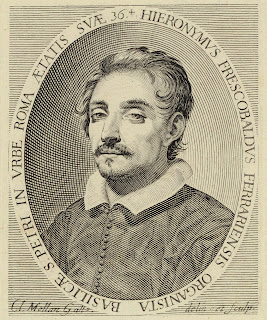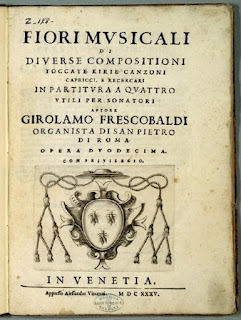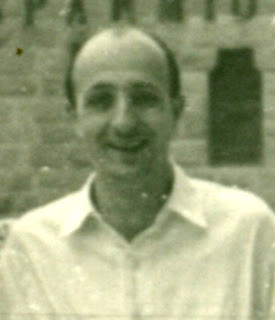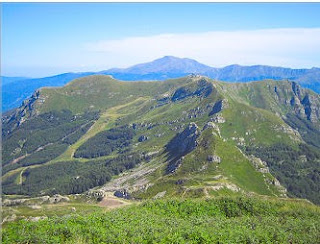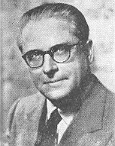Asia correspondent who covered wars in Vietnam and Cambodia
 |
| Tiziano Terzani spent 30 years working as a journalist in East Asia |
He worked for more than 30 years for the German news magazine Der Spiegel, who took him on as Asia Correspondent in 1971, based in Singapore.
Although he wrote for other publications, including the Italian newspapers Corriere della Sera and La Repubblica, it was Der Spiegel who allowed him the freedom he craved. To a large extent he created his own news agenda but in doing so offered a unique slant on the major stories.
He was one of only a handful of western journalists who remained in Vietnam after the liberation of Saigon by the Viet Cong in 1975 and two years later, despite threats to his life, he reported from Phnom Penh in Cambodia after its capture by the Khmer Rouge.
He lived at different times in Beijing, Tokyo, Singapore, Hong Kong, Bangkok and New Delhi. His stay in China came to an end when he was arrested and expelled in 1984 for "counter-revolutionary activities".
By chance, in the summer of 1991, Terzani was on holiday in Siberia, exploring the region's boundary with China, when news of the coup against President Gorbachev reached him.
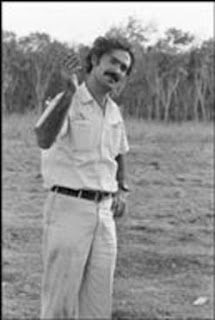 |
| Terzani at first saw life in Asia as an antidote to western capitalism |
Another book, another hit with Italian readers in particular, described how an encounter with a fortune teller in Hongkong persuaded Terzani to spend the whole of 1993 avoiding air travel - a huge challenge in a continent the size of Asia. Despite their scepticism, Der Spiegel again indulged him and for 12 months he travelled only by rail, road, on foot or by water. It was a decision in which he felt vindicated when a helicopter he would have travelled on did indeed crash, as foreseen by his mystic soothsayer.
Terzani was born into a working-class family in Florence, a city he loved but at the same time despaired of for having allowed itself, in his eyes, to become an open-air museum, overrun with tourists.
Exceptionally intelligent - in time, he could speak five languages fluently - his teachers encouraged him to study law at the University of Pisa, where his room-mate was Giuliano Amato, a future Italian prime minister.
 |
| Tiziano Terzani, pictured on a visit to his homeland, Italy, in 2002 |
Terzani then decided to go to America, taking advantage of a Harkness scholarship to study Chinese at Stamford and Columbia universities, before returning to Italy and finding work with the daily newspaper, Il Giorno. He found Italy’s news values to be too parochial, however, and after knocking on many doors in different countries across Europe at last found someone who would take him on and allow him to base himself in the part of the world he most wanted to explore.
Terzani’s fascination with Asia stemmed in part from his disillusionment with the capitalist west. Left-leaning in his politics, for a time he saw Asian communism as a kind of antidote.
He immersed himself in Asian culture, learning their languages, adopting their dress, melting into the crowd so that he could prowl about without attracting attention and grow to understand fully the countries and people about whom he was writing. In time, though, after his experiences in Vietnam, Cambodia and China, he came to realise that communism was no more an ideal than capitalism.
 |
| Terzani's book on the end of the Soviet Union, Goodnight Mister Lenin |
He was warned, initially, that he might have only a short time to live, but after treatment in the United States he survived, in the event, for seven years, finding the energy to carry on working and to campaign against western intervention in Iraq and Afghanistan, which he visited after the September 11 attacks in 2001.
Terzani remained in India, where he drew comfort from meditation and spending periods in isolation in the Himalayas, returning to Italy only towards the end of his life and spending his final days in Orsigna, a village in the Apennines, near Pistoia. His book, Un altro giro di giostra (One More Ride on the Merry-Go-Round), which was in part about coming to terms with his illness, was another bestseller.
He died in 2004 and was survived by his wife Angela, whom he had met in Florence before moving to Singapore, and by his two children, Fulco and Saskia.
| Piazza della Signoria - the Loggia dei Lanzi |
Terzani’s description of Florence as a museum was thought to be a reference mostly to Piazza della Signoria, situated right in the heart of the city, close to the Duomo and the Uffizi Gallery, which is home to a series of important sculptures, including Giambologna’s The Rape of the Sabine Women and his Equestrian Monument of Cosimo I, Baccio Bandinelli’s Hercules and Cacus, the Medici Lions by Fancelli and Vacca, The Fountain of Neptune by Bartolemeo Ammannati, copies of Donatello’s Judith and Holofernes and Il Marzocco (the Lion), and the copy of Michelangelo’s David, at the entrance to the Palazzo Vecchio. Most days, summer and winter, will see the square thronged with tourists.
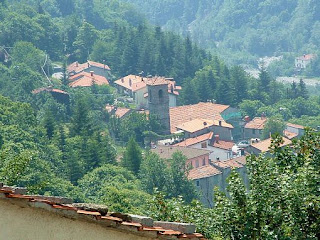 |
| The mountain village of Orsigna, in the Apennines above Pistoia in Tuscany |
The village of Orsigna, close to the border of Tuscany and Emilia-Romagna about 30km (19 miles) north of Pistoia, was once an important centre for timber cutting and sheep farming. It has been in decline in recent years, although a mill has recently been renovated, for the drying and milling of chestnuts for chestnut flour. The village was used for location shooting of a film about Tiziano Terzani , entitled La fine è il mio inizio (The End Is My Beginning), taken from his book of the same name. The church of Sant'Atanasio has some 19th century frescoes by the Pistoia painter Bartolomeo Valiani.
More reading:
How foreign correspondent Oriana Fallaci became one of Italy's most controversial journalists
How Enzo Biagi became the doyen of Italian political journalists
The story of pioneer war photographer Felice Beato
Also on this day:
1321: The death of the poet Dante Alighieri
1937: The birth of award-winning architect Renzo Piano
Home
